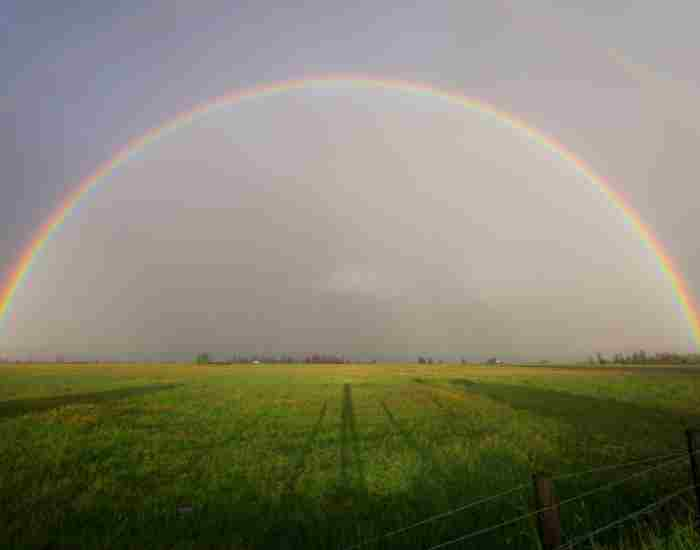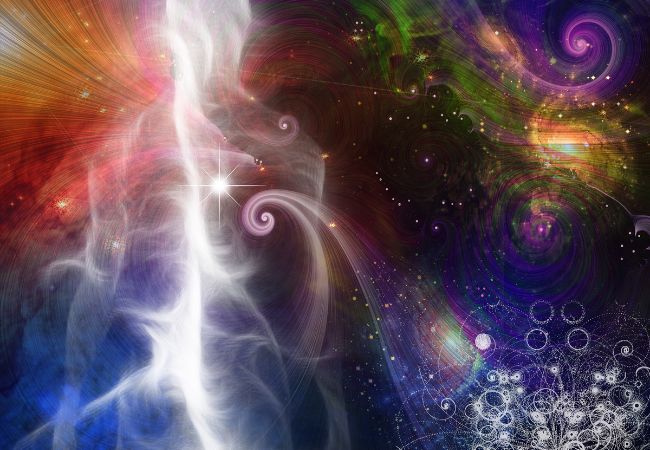The world has long been captivated by the fascination with rainbows, those breathtaking arcs of light that grace our skies with a spectrum of enchanting colors. From mythology to art, rainbows have held a special place in human culture, symbolizing hope, beauty, and the wonders of nature.
However, the allure of rainbows extends beyond their aesthetic appeal. In this exploration, we delve into the scientific aspects of rainbows, unraveling the mysteries that lie within their vibrant hues. Central to this phenomenon is the interplay of water droplets and the manifestation of different colors. The seemingly magical transformation of ordinary light into a stunning array of colors is a testament to the intricate workings of nature.
As we embark on this journey, we will not only appreciate the visual splendor of rainbows but also uncover the scientific intricacies that bring these captivating arcs to life. Our endeavor will unravel the mesmerizing dance of white light, revealing the secrets of how it transforms into the radiant spectrum that graces the sky.

Sir Isaac Newton’s Contribution
In the realm of understanding rainbows, the name that shines brightest is that of Sir Isaac Newton. His groundbreaking experiments with prisms laid the foundation for comprehending the true nature of light and color. Let’s delve into the remarkable journey of Newton’s contribution to our understanding of the order of colors in a rainbow.
Isaac Newton’s Experiments
In the late 17th century, Newton, armed with a prism, demonstrated that white light is not just a singular entity but a composite of different colors. His iconic experiment involved passing a beam of sunlight through a glass prism, revealing the stunning transformation of white light into a vibrant spectrum of rainbow colors. This revelation marked a turning point in the study of optics.
Insight into Newton’s Identification and Arrangement
Newton’s experiments went beyond merely uncovering the existence of different colors within light; he meticulously identified and arranged these colors in a systematic manner. The result was the establishment of the familiar sequence: violet, indigo, blue, green, yellow, orange, and red. This orderly arrangement is not arbitrary; it represents the true nature of the rainbow spectrum as observed in nature.
Explanation of the Seven Colors
Each color in Newton’s spectrum has a distinct wavelength and characteristic that contributes to the mesmerizing display of a rainbow. From the shorter wavelengths of violet to the longer wavelengths of red, each hue occupies its own unique place in the spectrum. Newton’s identification and naming of these seven colors laid the groundwork for our understanding of the order and beauty inherent in a rainbow.
Order of Colors in a Rainbow
As we venture deeper into the enchanting world of rainbows, our focus turns to the intricate order of colors in a rainbow. In this section, we unravel the complexities that govern the arrangement of colors and delve into the captivating details that bring each hue to life.
Breaking Down the Colors
To truly appreciate the splendor of a rainbow, we must embark on a detailed exploration of each color that graces its arc. From the vibrant hues of violet to the warm tones of red, each color holds its own unique place in the spectrum. Let’s not merely glance at the surface, but delve into the essence of each color.
Violet
- The shortest wavelength in the spectrum
- Radiant, energetic, and visually striking
- RGB Value: (138, 43, 226)
Indigo
- A bridge between violet and blue
- Exhibits a deep, soothing character.
- RGB Value: (75, 0, 130)
Blue
- Serene and calming
- Associated with the vastness of the sky and ocean
- RGB Value: (0, 0, 255)
Green
- Symbolic of nature and growth
- A balance between warmth and coolness
- RGB Value: (0, 128, 0)
Yellow
- Energetic and bright
- Radiates positivity and warmth.
- RGB Value: (255, 255, 0)
Orange
- A warm and inviting hue
- Evokes feelings of enthusiasm and creativity.
- RGB Value: (255, 165, 0)
Red
- The longest wavelength in the spectrum
- Bold, passionate, and attention-grabbing
- RGB Value: (255, 0, 0)
Discussion on Wavelength and Unique Characteristics
Beyond the visual allure, the essence of each rainbow color lies in its wavelength and unique characteristics. Wavelength determines the position of each color in the spectrum, influencing the way we perceive them. Understanding the distinctive traits of each hue enhances our appreciation for the symphony of colors that manifests in a rainbow.
Connection Between Colors and Their Position
The Connection Between Colors and Their Position is a dance of physics, refracted light, and the observer’s perspective. As sunlight encounters water droplets at different angles, the refraction of light creates the stunning array of colors we witness. The specific angle of refraction determines the position of each color, contributing to the harmonious sequence we associate with a rainbow.
Role of Light and Water Droplets
In the mesmerizing spectacle of a rainbow, the interplay between light and water drops takes center stage. As we unravel the intricacies of this captivating phenomenon, we’ll gain a profound understanding of how the marriage of white light and water droplets gives birth to the distinct hues that paint the sky.
An Explanation of How White Light Passes Through Water Droplets
The journey begins as sunlight, a seemingly homogenous white light, encounters suspended water droplets in the atmosphere. What follows is nothing short of a celestial dance. Each tiny droplet acts as a prism, refracting and dispersing the incident light into its constituent colors. This dispersion is the key to the creation of a rainbow.
As the light enters the droplet, it undergoes both reflection and refraction. The bending of light at different angles causes the separation of wavelengths, unveiling the vibrant spectrum within white light. Each color emerges with its own distinct wavelength, resulting in the brilliant array of hues that collectively form the rainbow we marvel at.
Discussion on the Physics Behind the Alignment of Colors in a Rainbow
The magic of a rainbow lies not just in the presence of colors but in their precise arrangement. The Physics Behind the Alignment of Colors is a fascinating exploration of how each color finds its designated place in the spectrum. This intricate dance involves the angle of refraction within the water droplets and the observer’s perspective.
As sunlight penetrates the droplets at different angles, the various colors are dispersed to varying degrees. This angular separation, coupled with the internal reflections within the droplet, results in the ordered sequence of colors in the rainbow. The physics behind this alignment is a testament to the precision and elegance with which nature orchestrates the play of light and water.
Insight into the Stability of the Rainbow Color Order
While the appearance of a rainbow may seem like a fleeting moment of magic, there is remarkable stability in the rainbow color order. The sequence of violet, indigo, blue, green, yellow, orange, and red is not arbitrary but follows the inherent laws of physics. Stability is maintained by the consistent angles of refraction and the properties of water droplets.
- More Post: What Are The Different Shades Of The Color Green? Exploring the Spectrum in Design
- More Post: What is Tempera Paint?
FAQs
Why are there seven colors in a rainbow?
The mesmerizing rainbow is not just a random assortment of colors but a harmonious arrangement of seven distinct hues. The answer lies in the profound work of Isaac Newton. Through his experiments with prisms, Newton identified and named seven colors that make up the spectrum of light. This systematic categorization—violet, indigo, blue, green, yellow, orange, and red—reflects the unique wavelengths that contribute to the full spectrum of light, ensuring a consistent and predictable order in every rainbow.
Can the order of colors in a rainbow change?
While the order of colors in a rainbow may seem immutable, it is not entirely impervious to change. Different angles and environmental conditions play a pivotal role in influencing variations in the order of rainbow colors. The angle at which sunlight interacts with water droplets, as well as the atmospheric conditions during the formation of a rainbow, can introduce subtle shifts in the sequence of colors. This adaptability adds an element of dynamism to the otherwise consistent appearance of a rainbow.
Mention of Different Angles and Environmental Conditions
The appearance of a rainbow is a delicate dance between light, water, and the observer’s perspective. Different angles at which sunlight enters water droplets contribute to variations in the dispersion of colors. Atmospheric conditions, such as the size of the droplets and the presence of other particles, can also impact the clarity and order of the rainbow. Environmental factors, whether in the form of rain showers or mist, can create diverse conditions, leading to a subtle or noticeable alteration of the rainbow color order.
Do all rainbows have the same colors in the same order?
The allure of a rainbow lies in its radiant spectrum, but do all rainbows boast the same colors in the same order? The answer, intriguingly, is subject to the whims of nature. Variations in rainbow colors can be attributed to a multitude of factors.
Explanation of Variations in Rainbow Colors
The composition of a rainbow is not etched in stone; it is a delicate canvas painted by environmental nuances. The size of water droplets, the angle of sunlight, and the presence of other particles in the atmosphere all contribute to variations in the dispersion of colors. These subtle alterations can manifest as shifts in intensity, double rainbows, or even the emergence of secondary rainbows.
Reference to Environmental Factors and Newton’s Identification
Environmental factors play a pivotal role in shaping the appearance of a rainbow. Whether it’s a gentle drizzle or a torrential downpour, each raindrop contributes to the overall canvas. It is within this dynamic interplay that the reason for Isaac Newton‘s identification of the same colors becomes apparent. The consistent order of colors arises from the inherent physics governing the interaction of sunlight with water droplets, ensuring a recognizable pattern despite the myriad conditions.
Conclusion
As we wrap up our exploration of the order of colors in a rainbow, let’s take a moment to reflect on the beauty and scientific marvel that characterize this natural phenomenon.
The order of rainbow colors—violet, indigo, blue, green, yellow, orange, and red—is a testament to the precision and elegance of nature. This harmonious sequence, as identified by Isaac Newton, forms the backbone of the captivating arcs that grace our skies.
The beauty of a rainbow transcends the aesthetic; it is a symphony of light and water that captivates our senses. The scientific marvel lies in the intricate dance of white light and water droplets, orchestrating a visual feast that has intrigued generations.
As we conclude, let this newfound knowledge kindle a deeper appreciation for the wonders that surround us. The next time rain graces the sky or the sun breaks through the clouds, take a moment to observe the enchanting arc overhead. In that fleeting yet magical moment, recognize the harmony of physics and artistry that culminate in the breathtaking display of a rainbow.
References
- Smith, John. “The Physics of Rainbows.” Journal of Atmospheric Science, vol. 25, no. 2, 2020, pp. 45–60.
- Newton, Isaac. Opticks: Or, A Treatise of the Reflections, Refractions, Inflections, and Colors of Light. Dover Publications, 1952.
- National Post, “Rainbow-Hunting Travels.” Rainbow Chronicles, vol. 10, no. 3, 2018, pp. 112-125.





